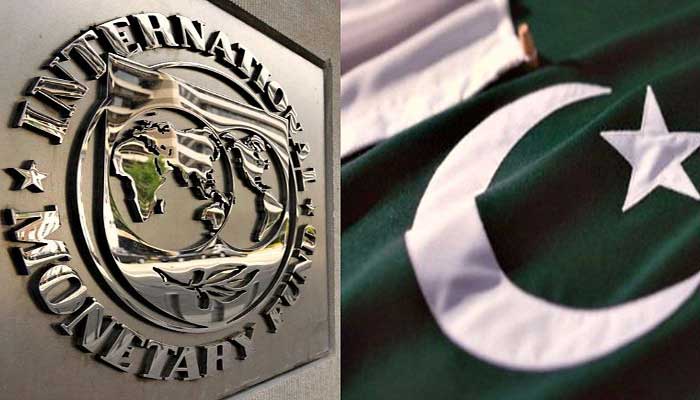IMF, Pakistan to soon reach $12bln bailout deal: Fitch
“Early indications suggest that Pakistani authorities requested aid of $12 billion, which is almost twice as large as the previous bailout package of $6.6 billion in 2013.”
KARACHI: Pakistan and the International Monetary Fund (IMF) will soon reach a bailout deal with a potential size of $12 billion, but the south Asian country is expected to have an increasing pressure to improve fiscal consolidation through austerity measures, Fitch Solutions said.
“Given the positive statements following the latest meeting of Prime Minister Imran Khan and International Monetary Fund (IMF) Chief Christine Lagarde in Dubai on 10th February 20 19, we at Fitch Solutions maintain our view that an agreement is likely to be reached in the near future,” Fitch Solutions, the primary distributor of ratings agency Fitch Ratings, said in a latest report.
“Early indications suggest that Pakistani authorities requested aid of $12 billion, which is almost twice as large as the previous bailout package of $6.6 billion in 2013.”
Fitch Solutions said measures to strengthen the country’s fiscal and debt dynamics will likely be a major cornerstone of the IMF deal, with the end goal of narrowing the budget deficit and stabilising the debt-to-GDP ratio through austerity measures.
“These policies will likely be aimed at reducing the budget deficit from an estimated 6.6 percent in 2018 to approximately 4 to 5 percent, or even lower, over the next one-to-three years [with the budget FY2018/19 already targeting a deficit of 4.9 percent],” it added.
“This would be roughly in line with the consolidation programme implemented in 2013 that set out expectations for a reduction in the fiscal deficit by an annualised one percent per year for three years.”
Fiscal consolidation will help to stabilise, and potentially lower the debt load with public debt currently at 71.4 percent of GDP.
The IMF previously targeted to lower the debt-to-GDP ratio from 63.9 percent in 2013 to 60.5 percent over a period of three years. “However, this was not achieved and the ratio eventually rose to 67.6 percent in 2016.”
The government is expected to strengthen tax administration, broaden the tax base, and raise tax-to-GDP ratio that improved to 11.2 percent in the last fiscal year from nine percent in the FY2013/14.
The IMF might further seek reduction in public spending.
“The reduction in public spending would likely involve further reductions to energy subsidies, as the target of reducing the subsidies to 0.4 percent of GDP under the previous package was not met given that subsidies still stood around 0.9 percent in 2016,” Fitch Solutions said.
“Moreover, there will also likely be a focus on reducing transfers to provinces so as to better align federal and provincial responsibilities in expenditures as pointed out by the IMF in its 20 17 Article IV document.” Fitch Solutions said the present government might need to begin net purchases of foreign exchange in the inter-bank spot market, tighten its net international reserves targets, and increase exchange rate flexibility – the measures that helped the previous government raise reserves to $23.6 billion in September 2016 from $9.8 billion in September 2013, equivalent to an import cover of 7.2 and 2.6 months, respectively.
“Given the low levels of foreign reserves at present, we expect reserve accumulation to be one of the main objectives of the bailout package, to be achieved through similar measures to those in 20 13,” it added.
The government is also expected to have a strong focus on improving anti-money laundering laws and countering financing of terrorism efforts, “given the poor regulations in these areas”.
Fitch Solutions said structural reforms will be another pillar of the IMF deal, similar to the reforms under the extended fund facility arrangement in 2013 and “these will likely focus on the privatisation of loss-making public sector entities and measures to improve the domestic business environment”.
-
 Jelly Roll Reveals How Weight Loss Changed Him As A Dad: 'Whole Different Human'
Jelly Roll Reveals How Weight Loss Changed Him As A Dad: 'Whole Different Human' -
 Prince Harry Gets Emotional During Trial: Here's Why
Prince Harry Gets Emotional During Trial: Here's Why -
 Queen Camilla Supports Charity's Work On Cancer With Latest Visit
Queen Camilla Supports Charity's Work On Cancer With Latest Visit -
 Dove Cameron Opens Up About Her Latest Gig Alongside Avan Jogia
Dove Cameron Opens Up About Her Latest Gig Alongside Avan Jogia -
 Petition Against Blake Lively PGA Letter Gains Traction After Texts With Taylor Swift Revealed
Petition Against Blake Lively PGA Letter Gains Traction After Texts With Taylor Swift Revealed -
 Netflix Revises Warner Bros. Deal To $83 Billion: All-cash Offer
Netflix Revises Warner Bros. Deal To $83 Billion: All-cash Offer -
 Prince Harry Mentions Ex-girlfriend Chelsy Davy In UK Court
Prince Harry Mentions Ex-girlfriend Chelsy Davy In UK Court -
 David, Victoria Beckham 'quietly' Consulting Advisers After Brooklyn Remarks: 'Weighing Every Move'
David, Victoria Beckham 'quietly' Consulting Advisers After Brooklyn Remarks: 'Weighing Every Move' -
 Meta's New AI Team Delivered First Key Models
Meta's New AI Team Delivered First Key Models -
 Prince Harry Defends Friends In London Court
Prince Harry Defends Friends In London Court -
 AI May Replace Researchers Before Engineers Or Sales
AI May Replace Researchers Before Engineers Or Sales -
 Christina Haack Goes On Romantic Getaway: See With Whom
Christina Haack Goes On Romantic Getaway: See With Whom -
 Consumers Spend More On AI And Utility Apps Than Mobile Games: Report
Consumers Spend More On AI And Utility Apps Than Mobile Games: Report -
 Aircraft Tragedy: Missing Tourist Helicopter Found Near Japan Volcano Crater
Aircraft Tragedy: Missing Tourist Helicopter Found Near Japan Volcano Crater -
 Taylor Swift Lands In Trouble After Blake Lively Texts Unsealed
Taylor Swift Lands In Trouble After Blake Lively Texts Unsealed -
 'Prince Harry Sees A Lot Of Himself In Brooklyn Beckham'
'Prince Harry Sees A Lot Of Himself In Brooklyn Beckham'




